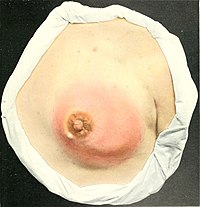
Photo from wikipedia
PurposeWe present a case involving an extensive epidural abscess that was successfully treated with computed tomography (CT)-guided percutaneous needle drainage and systemic antibiotic therapy.MethodsA 44-year-old woman with a history of… Click to show full abstract
PurposeWe present a case involving an extensive epidural abscess that was successfully treated with computed tomography (CT)-guided percutaneous needle drainage and systemic antibiotic therapy.MethodsA 44-year-old woman with a history of spine injection procedures complained of severe backache and progressive radiating pain in her right lower extremity followed by sensory deficits in her right lower limb. A laboratory examination revealed leukocytosis and hyperglycemia. Magnetic resonance imaging of the lumbar region revealed an extremely large posterior spinal epidural abscess (SEA) extending from L2 to S2. Because the patient did not respond to intravenous antibiotics alone, she underwent CT-guided percutaneous needle drainage and irrigation.ResultsStaphylococcus aureus was detected in the purulent material from this abscess. Her clinical symptoms were dramatically and immediately relieved after this procedure. She achieved complete neurological recovery after 2 months of antibiotic therapy.ConclusionCT-guided percutaneous needle drainage and irrigation may be a rational treatment choice for patients with SEA with the exception of patients with a chronic abscess, an anterior abscess or discitis.
Journal Title: European Spine Journal
Year Published: 2017
Link to full text (if available)
Share on Social Media: Sign Up to like & get
recommendations!